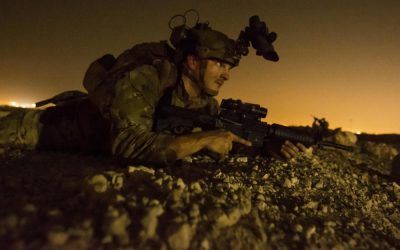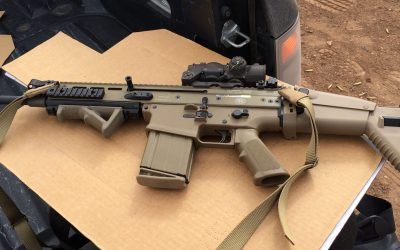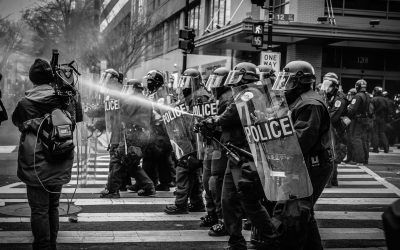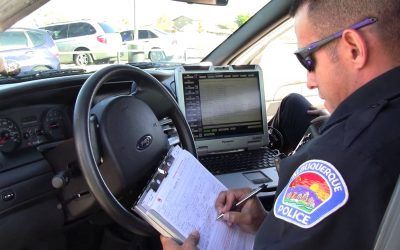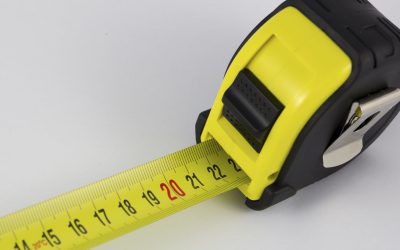Eyes In the Back of Your Head: A Personal Radar System
Ever get that tingling sense that someone is coming up behind you? We found a company that invented a personal security radar that could drastically limit an adversary’s ability to surprise you. That’s worth talking about.
Fighting at Night
With some reasonable preparation, proportional to your personal risk of having to fight at night — you can use the darkness to gain and maintain gross overmatch. Start by sorting out your own personal risk, which should drive your investment in training and equipment. Consider both technical and non-technical ways you can improve your ability to see and screw with your adversary’s ability to see.
How to Handle a Traffic Stop
Traffic stops are dangerous and unpleasant. A lot of forces converge to make traffic stops dangerous: cops get killed on traffic stops, so they are anxious about them, some communities feel unfairly targeted and perceive a risk from the police, and everyone is at risk to distracted and drunk motorists passing by the stop. No one likes being pulled over, especially if they don’t trust the police. There has to be something we can do to make this whole thing safer and easier for everyone
These aren’t my pants…
The subtle, contextual cues that guide our instincts are often tough to put our finger on, but they are also the reason we might approach one person or situation differently than another. The last thing we want to do is leave those decisions up to someone else’s interpretation. It is difficult to teach what stress, deception, and threatening body language look like in training.
Tactical Case for Restraint
One of the key flaws in civilian tactical training is how much time and effort we put into shooting and fighting skills and how little time and effort we put into conflict resolution. If all we teach is shooting, and the one tool in your “toolbox” is carbine skills, then the whole world might tend to look like a shooting range to you. That is a dangerous habit pattern…
Philando Castile
In July 2016 a police officer in Minnesota stopped a car and the driver informed the officer that he was armed. The driver was apparently reaching for his wallet, but the officer perceived that he was reaching for the gun. The officer gave him instructions to not reach for it, the driver said that he wasn’t, and somewhere in the mix the officer shot and killed him. The driver’s name was Philando Castile. The officer was charged with manslaughter but was acquitted by a jury. He was fired by his agency.
Riting for Cops
Poor writing kills cops. It kills cops because it doesn’t play well in the media or in court. That stilted pseudo-professional way of writing in passive voice makes cops sound intentionally opaque, robotic, and incompetent. Bad writing invites scrutiny, ridicule, and enhanced oversight by people who are far-removed from tactical reality…
Home Security: Defense in Depth!
Every gun guy (and lady) has thought about how they might have to confront an intruder coming into their house. Too many times, when talking home defense, I have heard the conversation go to that universal language of the pump shotgun
Lessons from Aviation
3 Key Lessons from Tactical Aviation In my military career, I have sat through A LOT of training. I have had training on how to work a fire extinguisher, “total quality management,” how to welcome all gender identities into the workplace, and how to report human...
21 Foot Rule
One of the patterns we have noticed lately is how intense the tactical community’s relationship with fads can be. The Sheepdog analogy is a useful way to help a young soldier or cop begin to understand that they have to be prepared to do violence, but in a constrained way. It tends to fall apart when taken too far, though. The Spartan legacy is useful in inspiring toughness – but that doesn’t mean you have to run around wearing a helmet and shield. In the tactical training telephone game, good ideas can morph into rules and then into obsessions, and in the process, they can lose their utility. One of the big ones is the 21-Foot Rule.
On Jiu Jitsu, with Cecil Burch
ON JIU JISTU, IN REAL LIFE Here is an excerpt our episode we did with Cecil Burch, owner of Immediate Action Combatives, on martial arts for street fighting. "...it's not it's not a drag race, Which is what a typical martial arts in defensive tactics and fighting has...
Administrative “Tactics”
ADMINISTRATIVE "TACTICS"Jim and I occasionally wander into the less tacti-cool and more administrative topics in the podcast, and we recognize that might be kind of boring but truthfully, administrators make the world go ‘round and some of the most tactical “battles”...
Attitude and Survival
ATTITUDE AND SURVIVAL I ran a group of brand-new police recruits through an imagery/thought experiment that led to a conversation that I think is important. If you listened to our podcast episode we did with Brian Willis, we talked about what Imagery is—but in case...
Group Dynamics
GROUP DYNAMICSHave you ever gone to a class or started a new job, and noticed that it takes some time before people begin to talk to each other? Understanding group dynamics is important for anyone in a leadership role. A useful way to examine group dynamics are the...
Making Smaller Circles
MAKING SMALLER CIRCLESIn his book The Art of Learning, Joshua Waitzkin describes one of his philosophies on self-teaching he calls “making smaller circles.” (Did you know we have a recommended reading list? Check it out at www.tacticaltangents.com/reading. The page...
Spheres of Influence
SPHERES OF INFLUENCEI was at an instructor conference last week and it occurred to me that police trainers everywhere have a lot in common: Our purpose, passion, and philosophy are often in sync, and we face similar challenges—advocating for more and better training...
Backup Guns, Yay or Nay?
BACKUP GUNS: YAY OR NAY?Back in the day, I carried a secondary gun at work because, well, I guess I hadn’t really thought about why—I just did. Maybe I’d get separated from my primary, or at least be in a fight over it, and having another one would be helpful. Or...
Mantis: Data-Driven Shooting
MANTIS: IMPROVING YOUR SHOOTING WITH DATAWe are excited to announce our new sponsor, Mantis. The MantisX is a product that I believe in—which is the only sort of product I’d endorse. In fact, I asked my wife to buy me one for my birthday last year, and I’ve been using...
The Glance is the Beep
"THE GLANCE IS THE BEEP"I want to convey a great teaching point that I learned from John Correia at Active Self Protection. ASP is a massive YouTube channel that John founded to teach lessons learned from self-defense encounters caught on camera. If you haven’t heard...
Use of Force in Self Defense
USE OF FORCE IN SELF DEFENSETrying out a new format for the bulletin, we need your feedback! Leave us a comment below to let us know if you like this video. We'll still use the printed bulletins too, but we might do a little of both. Whatcha think? Mike is a full-time...


